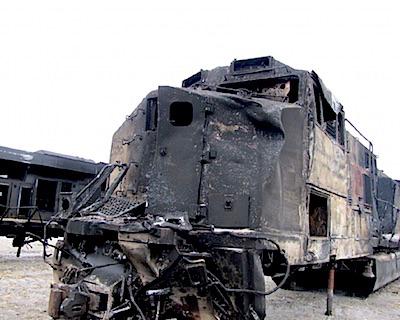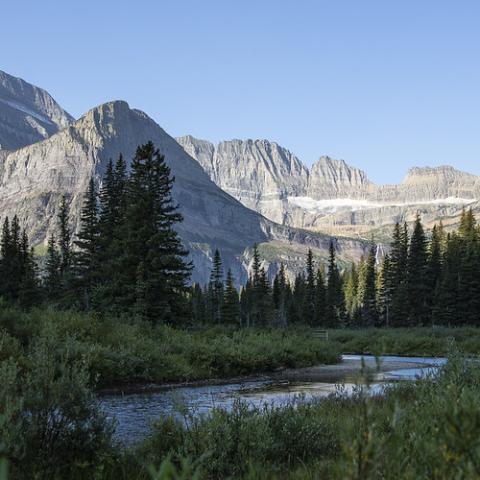Editor's note: On December 30, 2013, a BNSF Railway oil train hauling 106 tank cars of Bakken crude oil eastbound through North Dakota derailed near Casselton when it collided with a grain car that had derailed from a train coming the opposite direction. A preliminary report from the National Transportation Safety Board said a possible cause was a defective axle on the grain car that cracked. On April 25, 2015, the NTSB opened a "docket" that contained documents from its investigation. Among those documents were transcribed interviews with the oil train's engineer, Bryan Wilson, and his conductor, Pete Riepl.
Bryan Wilson knew immediately that there was no chance of stopping his 106-car-long oil train, which was traveling at about 43 miles per hour, when he saw the grain car lying across his tracks.
"I've been out here 9 years, I knew what was behind me. I knew we weren't stopping," the 35-year-old locomotive engineer told National Transportation Safety Board investigators searching for answers into why Wilson's BNSF Railway oil train explosively derailed outside Casselton, North Dakota, on a bitterly cold day near the end of December 2013. "My conductor looked at me, he just as big-eyed as I was, and said, 'What'?
"I said hit the ground, and we both hit the ground. And, you know, like it was seconds and bam, you know," the engineer went on during his taped interview. "People would think with that much weight, you just throw that C-6 (grain car), you know, toss it to the side and keep on going. I knew that wasn't going to be the outcome of this. I had a fully loaded C-6 laying across your track, I knew we weren't blowing through that C-6. And you know, it had crossed my mind, you know, do we jump, do we? And I thought better of that because I knew what we were hauling. I knew in my head them tanks were going to bust open, those tanks were going to come piling, you know, on top of everything."

The charred remains of the lead locomotive involved in the Casseleton derailment/NTSB
For his part, Pete Riepl had to take a second to make sure he had survived the collision.
"I've never been in a situation like that and I asked, 'What do we do?' And he said get on the ground and get ready. So we got on the ground, the floor of the locomotive, and held on," said Riepl in his interview. "Then we had her impact, and it was a big impact. You know, it jostled us around a bit. I knew just from how we had, the train was moving, that we weren't on the rail anymore. It seemed like forever. Everything seemed slow motion to me. We came to a stop, and I kind of looked at myself and was thankful that I was still around."

This image was captured by the locomotive's onboard camera just before the collision/NTSB
When the locomotive, which derailed along with 21 tanker cars filled with Bakken crude, came to a stop, Wilson and Riepl immediately knew they had to get away from the train.
"I don't know if it was him or me or whoever first yelled that there's fire, there's a lot of fire," recalled Mr. Wilson.
The two couldn't get out the front door of their locomotive as it was jammed shut because of the damage. Instead they went out the back door, jumping down from the tilted locomotive and running away from the burning train as fast as they could.
"I was exiting the cab then and started to get away from all the fire. It was -- the heat was intense. I mean, the whole situation just --I was in knee-deep snow. I couldn't get away as quickly as I would like to," Riepl went on. "The engineer, I looked back, he had exited the train as well, and we were heading east. We couldn't head north because the grain train was there. We couldn't head south because that's where the smoke was. We got about -- trying to get away and it was about a minute later the locomotive that we were traveling in was engulfed in flames. I suppose we were about 200 yards. I believe that that's when one of the tankers exploded."
NTSB investigators discovered a broken axle on one of the cars in the grain train that might have been responsible for the derailment.




 Support Essential Coverage of Essential Places
Support Essential Coverage of Essential Places







Comments
that entire left side tank burst look at your photos again